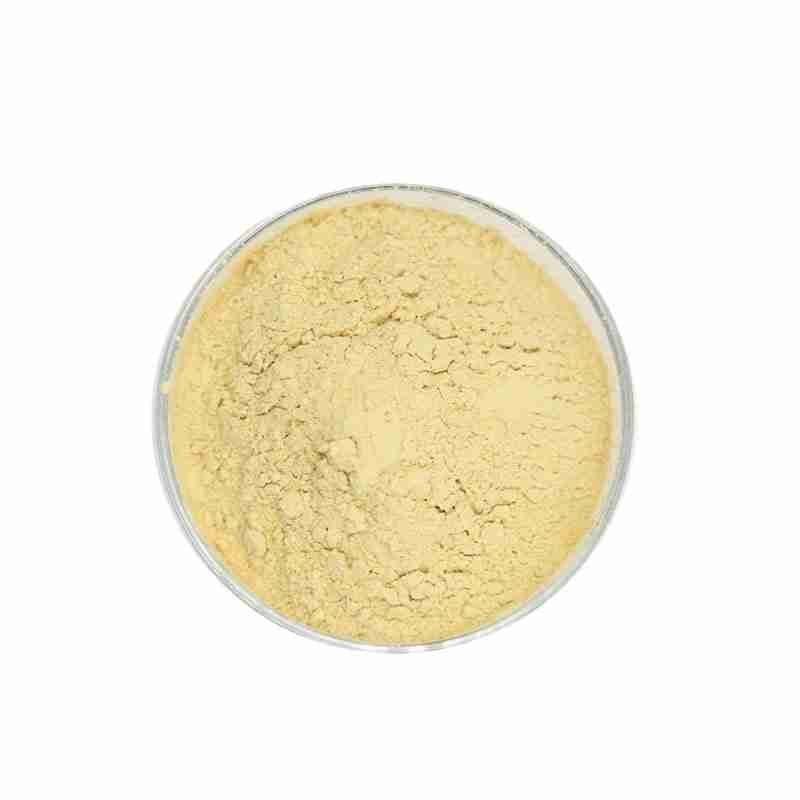Capryloyl Glycine CAS #14246-53-8
Capryloyl glycine is the main component of dermal structural protein and plays an extremely important job in the skin. One of its functions is to balance the pH value. The reason why the skin??s pH is around 5.5 is because it contains various weak acids, proteins and fats. When different ingredients react with the skin??s fatty proteins, these proteins undergo decarboxylation reactions, thereby changing the skin??s pH. Too high or too low pH is not good, especially for acne-prone skin.
Many studies have concluded that skin with acne-prone skin has a higher pH value. The presence of Capryloyl glycine can provide free carboxyl groups and maintain the balance of skin pH.
发送询盘
Capryloyl Glycine CAS #14246-53-8
| Caprylylglycine Basic information |
| Product Name: | Caprylylglycine |
| Synonyms: | Glycine, N-(1-oxooctyl)-;2-octanoylaminoacetic acid;N-Octanoylglycine;CAPRYLYLGLYCINE;N-Capryloylglycine;Einecs 238-122-3;N-Octanoylglycine-d2;CAPRYLOYL GLYCIN |
| CAS: | 14246-53-8 |
| MF: | C10H19NO3 |
| MW: | 201.26 |
| EINECS: | 238-122-3 |
| Product Categories: | |
| Mol File: | 14246-53-8.mol |
 |
|
| Caprylylglycine Chemical Properties |
| Melting point | 102-103 ??C |
| Boiling point | 403.9??28.0 ??C(Predicted) |
| density | 1.036??0.06 g/cm3(Predicted) |
| vapor pressure | 0Pa at 25?? |
| storage temp. | Sealed in dry,Room Temperature |
| solubility | DMSO (Slightly), Methanol (Slightly) |
| form | Solid |
| pka | 3.62??0.10(Predicted) |
| color | White to Off-White |
| Water Solubility | 1.557g/L at 20?? |
| InChI | InChI=1S/C10H19NO3/c1-2-3-4-5-6-7-9(12)11-8-10(13)14/h2-8H2,1H3,(H,11,12)(H,13,14) |
| InChIKey | SAVLIIGUQOSOEP-UHFFFAOYSA-N |
| SMILES | C(O)(=O)CNC(=O)CCCCCCC |
| LogP | 2.052 at 22?? |
| CAS DataBase Reference | 14246-53-8(CAS DataBase Reference) |
| EPA Substance Registry System | Glycine, N-(1-oxooctyl)- (14246-53-8) |
- 2
- 2-diallylpent-4-en-1-amine
- 4
- 95-16-9
- Ammonium sulfamate
- Benzothiazole
- cas:67889-00-3ح2
- cas:83524-75-8 | pigment black 32
- cas:928836-00-4 | 2
- cas:932745-70-5 | 4
- Chemical Minerals
- Coconut diethanolamide
- Daily Chemicals
- discount
- for sale
- General pvc resin
- hexyl D-glucoside
- in stock
- Lauramidopropyl betaine
- LAURIC ACID MONOETHANOLAMIDE
- Petroleum Additives
- Plasticiser
- Ploymers
- price
- PVC
- quotation
- Raw Materal
- Remove term: Petroleum Additives Petroleum Additive
- SODIUM ETHYL 2-SULFOLAURATE
Related Products
Succinimide is a heterocyclic organic compound and an important industrial chemical. It serves as a key intermediate in the synthesis of various pharmaceuticals, agrochemicals, and other specialty chemicals. Known for its reactivity and versatility, succinimide is widely used in the production of succinic anhydride, a precursor to many polymers and plasticizers, highlighting its significance in the chemical industry.
Product name:Cyclopentane
Purity:96%
Appearance:White powder
Package:25kg/bag
Sample:Available
Chemical Name: Arabic gum
CAS No.: 9000-01-5
Appearance: powder
Chemical Name: Ashwagandha Extract
Synonyms: Withania somnifera, ext.; Withania Somnefera Extract
CAS: 90147-43-6
Appearance: Brown
Chemical Name: 3-Hydroxybutyric acid
CAS No.: 625-71-8
Molecular Formula: C4H8O3
Molecular Weight: 104.1
Appearance: White powder
POLY(VINYL CHLORIDE-CO-ISOBUTYL VINYL ETHER) is a copolymer that combines the properties of vinyl chloride and isobutyl vinyl ether. This polymer offers a balance of rigidity and flexibility, along with enhanced chemical resistance and durability. It is commonly used in the production of films, coatings, and adhesives due to its excellent barrier properties against gases and moisture, making it ideal for packaging and construction applications.
Silicone oil, known for its chemical designation as dimethicone or polydimethylsiloxane, is a synthetic polymer with a backbone of alternating silicon and oxygen atoms, creating a highly versatile and stable compound. It is renowned for its exceptional lubricating properties, heat resistance, and non-toxic nature, making it a staple in various industries, including cosmetics, automotive, and aerospace.
This hydrophobic, non-volatile oil is valued for its ability to provide a smooth, non-greasy feel and to form stable emulsions with other ingredients. In personal care products, silicone oil is used to impart a silky texture, reduce friction on the skin, and create a protective barrier against environmental stressors without clogging pores.
Silicone oil’s chemical inertness and resistance to oxidation contribute to its long shelf life and stability in formulations. It is also appreciated for its compatibility with a wide range of substances, allowing for the creation of multifunctional products.
In summary, silicone oil is a reliable and multifaceted ingredient, offering a combination of performance, safety, and sensory benefits. Its use in a variety of applications reflects its versatility and enduring appeal in the marketplace.
Chemical Name: o-Xylene
Synonyms: 1,2-Dimethylbenzene; ortho-xylene
CAS No.: 95-47-6
Molecular Formula: C8H10
Molecular Weight: 106.17
Chemical Name: Potassium Castorate
CAS No.: 8013-05-6
Molecular Formula: C57H107K3O12
Molecular Weight: 1101.74718
Appearance: Yellow Liquid
Butylated Hydroxytoluene (BHT) is a synthetic phenolic antioxidant commonly added to foods, cosmetics, and packaging to prevent the oxidation of fats and oils, thereby extending their shelf life. It is also used as a preservative in a variety of products, including rubber, petroleum products, and animal feed. BHT is recognized for its effectiveness in maintaining nutrient levels, color, flavor, and odor in food products . It is known to have a melting point of 69-71??C, a boiling point of 265??C, and is soluble in ethanol, acetone, and benzene, but not in water, glycerin, or propylene glycol . BHT is also used in some dietary supplements due to its antioxidant properties . However, it is important to handle BHT with care, as it can cause skin irritation and is considered harmful if swallowed .
Chemical Name: UV-120
Other Name: (2’,4’-Di-tert-butylphenyl 3,5-di-tert-butyl-4-hydroxybenzoate)
CAS No.: 4221-80-1
Molecular Fomula: C29H42O3
Molecular weight: 438.66
Assay: ≥99%(LC)
Common English name: 5-iodo-2,3-dihydropyridazin-3-one
CAS No.: 825633-94-1
Molecular formula: C4H3IN2O
Molecular weight: 221.98
Sample: Available


















